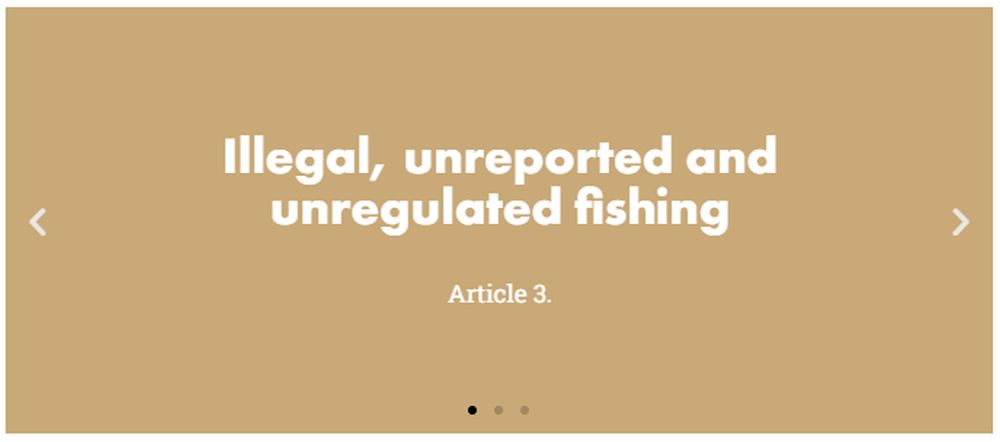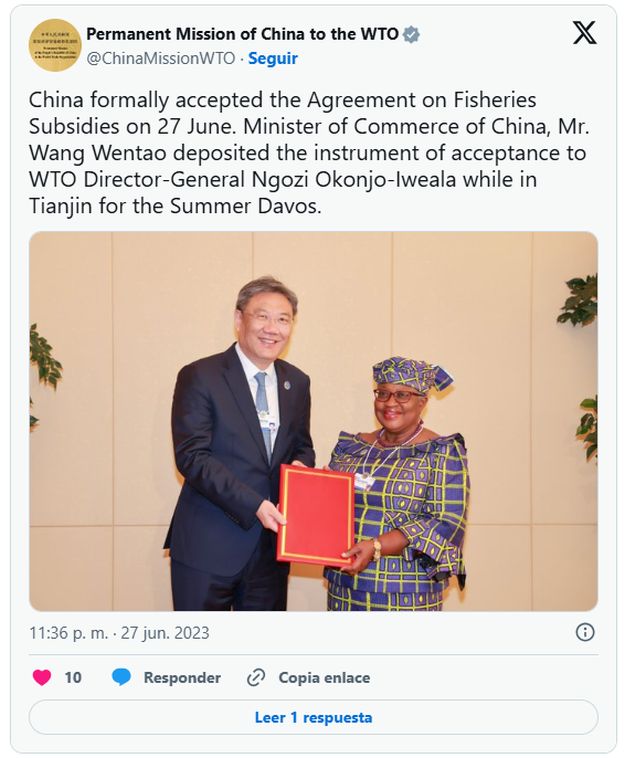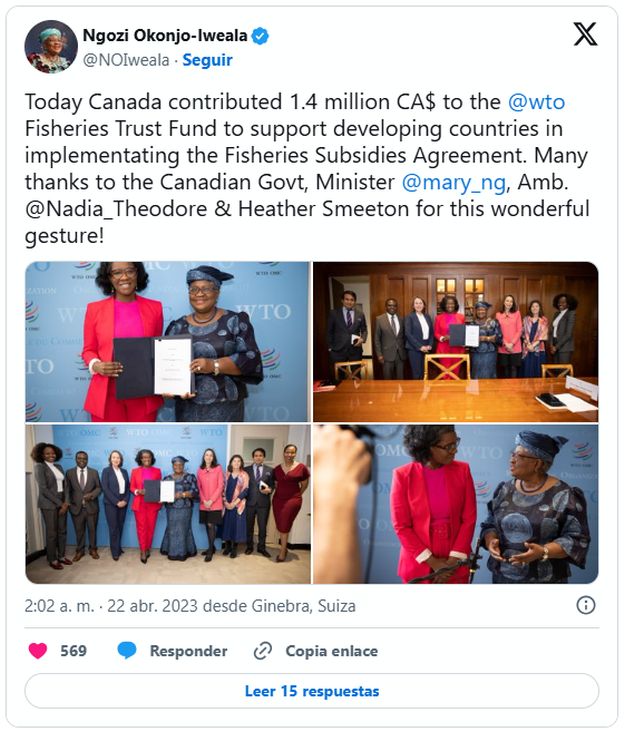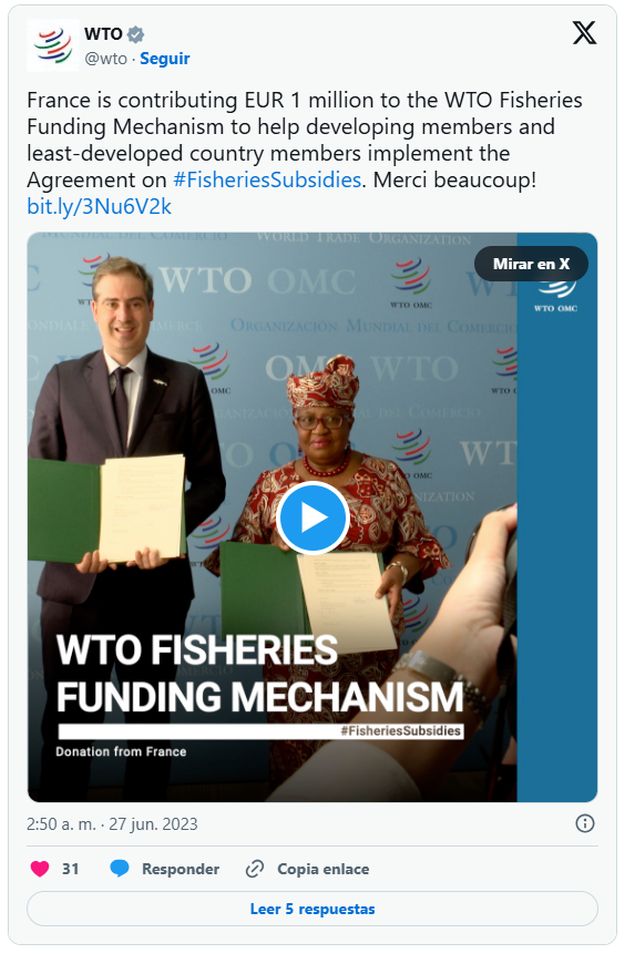- within International Law topic(s)
- in United States
- within Corporate/Commercial Law, Real Estate and Construction and Tax topic(s)
The World Trade Organization (WTO) adopted the Agreement on Fisheries Subsidies in June 2022. On September 15th, 2025, the Agreement finally entered into force. This treaty represents a landmark achievement for ocean sustainability and global trade. Its importance relies on the fact that it aims to eliminate harmful subsidies that contribute to overfishing and detrimental fishing-related activities, and it aims to achieve sustainable global fisheries in the near future. In this article, we explain what the agreement entails and why it matters.
What is the Agreement on Fisheries Subsidies?
The Agreement on Fisheries Subsidies is a set of binding rules that prohibit certain forms of subsidies that have negative impacts on marine resources and fish stocks. This Agreement prohibits certain forms of fisheries subsidies that contribute to overcapacity and overfishing, and eliminate subsidies that support illegal, unreported, and unregulated fishing.
The WTO Members negotiated the Agreement for more than a decade. Many countries had concerns regarding the scope and disciplines established in the Agreement. However, its final text was adopted in the 12th Ministerial Conference in June 2022. If you want more details on this matter, we published an article on this Ministerial Conference.
What does the Agreement on Fisheries Subsidies prohibit?
The Agreement applies to all subsidies provided by WTO members to their fishing sector, whether at the national, regional, or local level. Moreover, this Agreement defines a subsidy as a financial contribution by a government or a public body that confers a benefit to a person engaged in fishing or fishing-related activities. In particular, this WTO Agreement prevents its members from adopting the following:
Furthermore, the WTO Agreement on Fisheries Subsidies provides a special and differential treatment for developing and least developed countries and gives transitional periods for implementing the commitments. Accordingly, the Agreement includes exemptions from some of the prohibitions for artisanal and subsistence fishing; technical assistance and capacity building; and enhanced flexibilities for subsidies that contribute to development objectives.
The Agreement also establishes a notification and transparency mechanism, which requires Members to notify the WTO of any subsidies they grant to their fishing sector and any other relevant information on their fisheries management systems. The Agreement further establishes a committee on fisheries subsidies to oversee the implementation and operation of the agreement.
Why does the Agreement on Fisheries Subsidies matter?
The Agreement matters because it addresses one of the main drivers of overfishing and depletion of marine resources: harmful fisheries subsidies. The Agreement on Fisheries Subsidies is the first WTO agreement that focuses on environmental sustainability and that implements a target of the 2030 Agenda for Sustainable Development. Specifically, the Agreement fulfills the Sustainable Development Goal (SDG) 14.6, which calls for prohibiting certain fisheries subsidies by 2020.
According to the Food and Agriculture Organization (FAO), about 34% of global fish stocks are overfished, and another 60% are fully fished. This poses serious threats to food security, livelihoods, biodiversity, and ocean health
What are the next steps for implementing the Agreement on Fisheries Subsidies?
The Agreement on Fisheries Subsidies has just entered into force. The Agreement stipulates that it would take effect once two-thirds of WTO Members had deposited their instruments of acceptance. On September 15, 2025, the necessary number of Members was reached with the deposit of Brazil, Kenya, Tonga, and Vietnam.
In addition to its entry into force, Members agreed that they will continue to negotiate on outstanding issues, such as distant water fisheries subsidies; fish processing subsidies; transparency and dispute settlement provisions; and special treatment for developing and least-developed countries in the future.
What countries have formally accepted the WTO Agreement on Fisheries Subsidies?
Since its adoption, several countries have accepted the WTO Agreement on Fisheries Subsidies. For example, the United States, the European Union, and China joined this list of countries in 2023. These accessions were highly significant, as these countries have some of the largest fishing industries worldwide and set the tone for others until two-thirds of WTO Members joined.
It should be noted that Mexico has not yet accepted or joined the Agreement on Fisheries Subsidies.
The Fisheries Funding Mechanism
The Agreement on Fisheries Subsidies also establishes a new financing mechanism to accept voluntary contributions from members and other donors. Its objective is to provide technical assistance and training to developing country members to help them implement the Agreement. WTO members are constantly encouraged to support this mechanism.
In addition, the fund aims to strengthen overall fisheries management practices and support the implementation of the Agreement on Fisheries Subsidies. The fund will be managed by the WTO with partner organizations: the Food and Agriculture Organization of the United Nations (FAO), the International Fund for Agricultural Development, and the World Bank.
Canada and France were among the first countries to contribute to this fund in 2023. Later, other governments, such as those of the Netherlands and Australia, also made significant contributions to the fund.
What do the experts say on the Agreement on Fisheries Subsidies?
The International Institute for Sustainable Development (IISD) recently published a Reader's Guide to the WTO Agreement on Fisheries Subsidies. This guide is a publication that provides a comprehensive and accessible explanation of the main features and implications of the agreement. This publication is intended for policy makers, practitioners, researchers, civil society, and anyone interested in learning more about this landmark agreement and its potential implications for ocean sustainability and global trade.
Conclusion and Insights
The Agreement on Fisheries Subsidies is a historic achievement for ocean sustainability and multilateral cooperation. It demonstrates that trade rules can play a positive role in addressing environmental challenges and supporting development goals. And its entry into force is a crucial step forward for the commitment to ocean conservation and the multilateral trading system.
The content of this article is intended to provide a general guide to the subject matter. Specialist advice should be sought about your specific circumstances.







